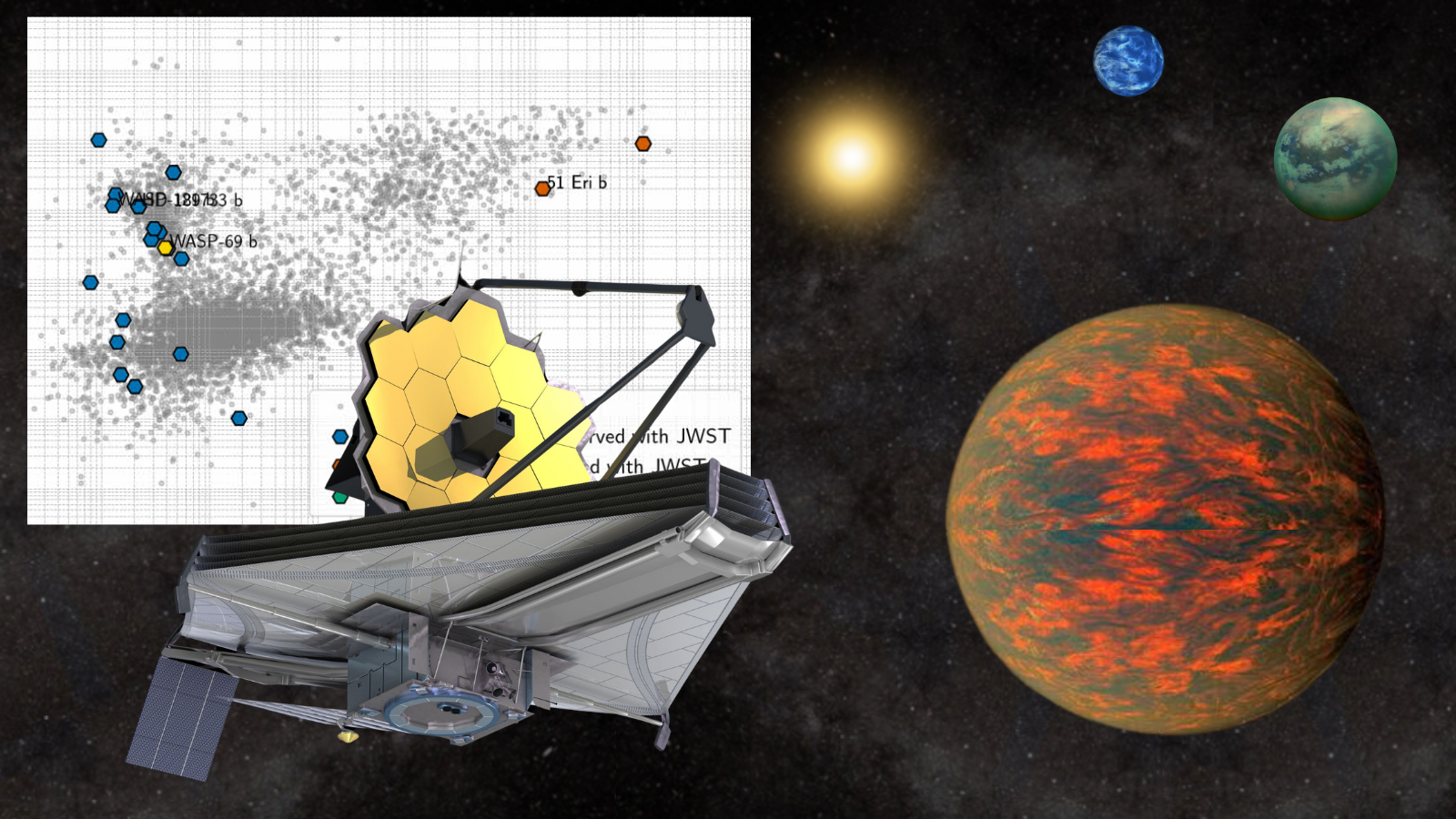WHAT THE
Table of Contents Introduction: Catching Up with the Previous Posts on GenAI What is Generative AI (GenAI)? The End-to-End GenAI Pipeline: Breaking It Down The Meaning Behind the End-to-End Pipeline Why Knowing the GenAI Pipeline is Crucial for Engineers Real-World Application of the GenAI Pipeline Conclusion: From Concept to Creation Additional Resources and Further Reading Introduction: Catching Up with the Previous Posts on GenAI Before we dive into the End-to-End GenAI Pipeline, let’s quickly refresh your memory on the foundational concepts from my previous posts. If you’re new to the world of Generative AI, or if you want a quick recap, I highly recommend checking out those earlier articles to understand the basics of GenAI, its applications, and how it’s reshaping industries. Once you're familiar with those fundamentals, we can tackle the more technical side of things—how to build and optimize a GenAI model from scratch. Trust me, knowing the pipeline will make your journey through the world of AI so much smoother. Now, let’s dive right in! What is Generative AI (GenAI)? Generative AI is all about creating new content—whether that's text, images, audio, or video. It doesn’t just analyze and interpret data; it creates new possibilities. We’re talking about tools like ChatGPT, DALL·E, and even deepfake technology, all of which generate content based on patterns learned from existing data. Whether you’re a developer, content creator, or even a business strategist, GenAI is opening up a world of creative potential. But, like anything powerful, it requires the right structure to make sure it performs well and delivers reliable results. That’s where understanding the End-to-End GenAI Pipeline comes in. The End-to-End GenAI Pipeline: Breaking It Down At its core, an End-to-End GenAI pipeline is a series of stages through which data flows, transforming from raw inputs into meaningful outputs. Think of it like cooking a meal—you start with raw ingredients (data), then process them step-by-step (preprocessing, feature engineering, modeling), until you have the final dish (your trained model). Each of these stages is crucial, and they all need to be executed in the right order to ensure a smooth workflow. Here’s a quick breakdown of the main stages: Data Acquisition Data Preprocessing Feature Engineering Modeling Evaluation Deployment Monitoring and Model Updating These stages work together to take raw data and shape it into a model that can generate valuable insights or content. The Meaning Behind the End-to-End Pipeline The End-to-End pipeline means the full process from start to finish. It's not just about writing a single line of code to train a model; it's about understanding the complete workflow—every step, from gathering and preparing your data to deploying and monitoring your AI system. Why Is It Important? Let me put it this way: imagine you're building a house. If you skip steps in the design or construction process, your house might look great from the outside, but it could collapse under pressure. Similarly, if you skip a step in the AI pipeline—say, you don’t preprocess your data properly—your AI model might work fine initially but will fail when it faces real-world data. Understanding this pipeline gives you the blueprint for building robust AI systems, ensuring quality, and minimizing risks. Why Knowing the GenAI Pipeline is Crucial for Engineers As a GenAI engineer, your ability to navigate through the pipeline is essential. Each step plays a role in shaping the outcome of your AI model. Let's break down why each part of the pipeline matters: Data Acquisition: Without data, your AI model is nothing. Whether you're pulling data from a database, scraping the web, or generating it synthetically, this first step is the foundation. Imagine trying to train a chatbot on a dataset that’s full of irrelevant data—good luck having meaningful conversations with that! Data Preprocessing: Data rarely comes in a clean, ready-to-use format. Preprocessing involves cleaning and transforming raw data into something usable. Skip this step, and your model might choke on dirty data. For instance, imagine building a recommendation system with messy product descriptions—confusing input leads to confusing output! Feature Engineering: This is where you transform your data into meaningful patterns. Whether it's turning words into vectors (via TF-IDF or Word2Vec) or images into pixel data, feature engineering is critical for helping your model understand the world. Consider this: In a movie recommendation system, features might include the genre, director, and user ratings. These features determine how well your AI can suggest movies to users. Modeling: This is where the magic happens—feeding your processed data into a machine learning model. Whether you’re using traditional algorithms or modern t

Table of Contents
- Introduction: Catching Up with the Previous Posts on GenAI
- What is Generative AI (GenAI)?
- The End-to-End GenAI Pipeline: Breaking It Down
- The Meaning Behind the End-to-End Pipeline
- Why Knowing the GenAI Pipeline is Crucial for Engineers
- Real-World Application of the GenAI Pipeline
- Conclusion: From Concept to Creation
- Additional Resources and Further Reading
Introduction: Catching Up with the Previous Posts on GenAI
Before we dive into the End-to-End GenAI Pipeline, let’s quickly refresh your memory on the foundational concepts from my previous posts. If you’re new to the world of Generative AI, or if you want a quick recap, I highly recommend checking out those earlier articles to understand the basics of GenAI, its applications, and how it’s reshaping industries.
Once you're familiar with those fundamentals, we can tackle the more technical side of things—how to build and optimize a GenAI model from scratch. Trust me, knowing the pipeline will make your journey through the world of AI so much smoother.
Now, let’s dive right in!
What is Generative AI (GenAI)?
Generative AI is all about creating new content—whether that's text, images, audio, or video. It doesn’t just analyze and interpret data; it creates new possibilities. We’re talking about tools like ChatGPT, DALL·E, and even deepfake technology, all of which generate content based on patterns learned from existing data.
Whether you’re a developer, content creator, or even a business strategist, GenAI is opening up a world of creative potential. But, like anything powerful, it requires the right structure to make sure it performs well and delivers reliable results. That’s where understanding the End-to-End GenAI Pipeline comes in.
The End-to-End GenAI Pipeline: Breaking It Down
At its core, an End-to-End GenAI pipeline is a series of stages through which data flows, transforming from raw inputs into meaningful outputs. Think of it like cooking a meal—you start with raw ingredients (data), then process them step-by-step (preprocessing, feature engineering, modeling), until you have the final dish (your trained model).
Each of these stages is crucial, and they all need to be executed in the right order to ensure a smooth workflow.
Here’s a quick breakdown of the main stages:
- Data Acquisition
- Data Preprocessing
- Feature Engineering
- Modeling
- Evaluation
- Deployment
- Monitoring and Model Updating
These stages work together to take raw data and shape it into a model that can generate valuable insights or content.
The Meaning Behind the End-to-End Pipeline
The End-to-End pipeline means the full process from start to finish. It's not just about writing a single line of code to train a model; it's about understanding the complete workflow—every step, from gathering and preparing your data to deploying and monitoring your AI system.
Why Is It Important?
Let me put it this way: imagine you're building a house. If you skip steps in the design or construction process, your house might look great from the outside, but it could collapse under pressure. Similarly, if you skip a step in the AI pipeline—say, you don’t preprocess your data properly—your AI model might work fine initially but will fail when it faces real-world data.
Understanding this pipeline gives you the blueprint for building robust AI systems, ensuring quality, and minimizing risks.
Why Knowing the GenAI Pipeline is Crucial for Engineers
As a GenAI engineer, your ability to navigate through the pipeline is essential. Each step plays a role in shaping the outcome of your AI model. Let's break down why each part of the pipeline matters:
- Data Acquisition: Without data, your AI model is nothing. Whether you're pulling data from a database, scraping the web, or generating it synthetically, this first step is the foundation.
Imagine trying to train a chatbot on a dataset that’s full of irrelevant data—good luck having meaningful conversations with that!
- Data Preprocessing: Data rarely comes in a clean, ready-to-use format. Preprocessing involves cleaning and transforming raw data into something usable. Skip this step, and your model might choke on dirty data.
For instance, imagine building a recommendation system with messy product descriptions—confusing input leads to confusing output!
- Feature Engineering: This is where you transform your data into meaningful patterns. Whether it's turning words into vectors (via TF-IDF or Word2Vec) or images into pixel data, feature engineering is critical for helping your model understand the world.
Consider this: In a movie recommendation system, features might include the genre, director, and user ratings. These features determine how well your AI can suggest movies to users.
Modeling: This is where the magic happens—feeding your processed data into a machine learning model. Whether you’re using traditional algorithms or modern transformer-based models like GPT, this step shapes the intelligence of your AI.
Evaluation: You’ll need to evaluate your model’s performance against certain benchmarks (accuracy, precision, recall). Without this step, you risk deploying a faulty model that doesn't meet the business requirements.
Deployment: Once your model is ready, it’s time to deploy it for real-world use. Deployment ensures that your AI can be accessed and used by others, whether that’s through a chatbot, an API, or an embedded system.
Monitoring and Model Updating: AI isn’t “set it and forget it.” Your model must be monitored, retrained, and adjusted based on real-world performance and new data.
Real-World Application of the GenAI Pipeline
Let’s look at how this pipeline would apply in a real-world scenario. Imagine you’re building a customer support chatbot for an e-commerce platform.
- Data Acquisition: You start by collecting customer queries from previous chat logs, emails, and FAQs.
- Data Preprocessing: You clean the data by removing irrelevant information (like signatures or email headers) and tokenize customer questions into words.
- Feature Engineering: You transform the text into meaningful vectors using Word2Vec or TF-IDF.
- Modeling: You feed this data into a transformer model (like GPT) to train it on customer support dialogues.
- Evaluation: You evaluate your model using accuracy, checking how well it answers customer queries and resolves issues.
- Deployment: You deploy the chatbot on the website or integrate it with a messaging platform.
- Monitoring: You monitor the chatbot’s performance, making updates as customer queries evolve over time.
Conclusion: From Concept to Creation
The End-to-End GenAI Pipeline might seem like a series of technical steps, but it’s a critical framework for turning raw data into something meaningful. It’s like the recipe to a perfect meal—you need each ingredient and step to make it work. As a GenAI engineer, understanding this pipeline will empower you to build robust and reliable models that can solve real-world problems.
Are you ready to dive in? Knowing how to navigate through each step will set you apart in the rapidly evolving field of Generative AI.
Additional Resources and Further Reading
To dive deeper into each step of the GenAI pipeline, check out these resources:
- Article on Data Acquisition Techniques
- Understanding Feature Engineering in NLP
- Introduction to Transformer Models
Quote of the day:
"AI is not about replacing humans; it’s about augmenting human capabilities." – Me
What's Your Reaction?


























_Vladimir_Stanisic_Alamy.jpg?#)
























![Kicked Out Of His Seat—Delta Passenger Forced To Move For A Dog [Roundup]](https://viewfromthewing.com/wp-content/uploads/2024/12/delta_dog_in_bulkhead-transformed.jpg?#)


























![[DEALS] Microsoft Project 2021 Professional: Lifetime License for Windows (92% off) & Other Deals Up To 98% Off – Offers End Soon!](https://www.javacodegeeks.com/wp-content/uploads/2012/12/jcg-logo.jpg)




